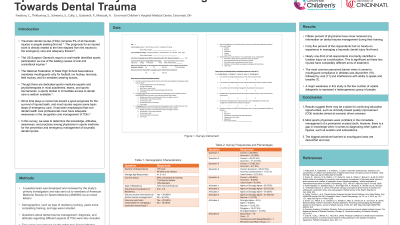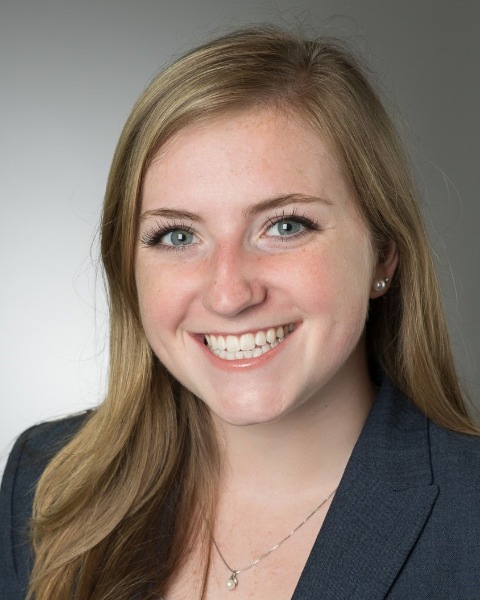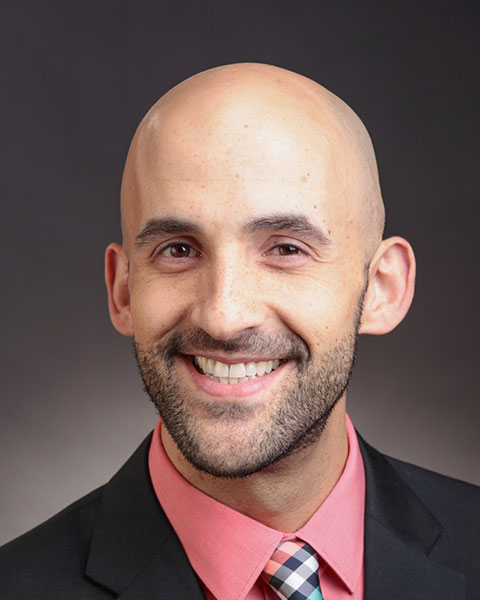Trauma
423 - Sports Medicine Physician Knowledge and Attitudes Towards Dental Trauma


Courtney M. Favaloro, DDS (she/her/hers)
Pediatric Dental Resident
Cincinnati Children’s Medical Center Hospital, Cincinnati, OH
Cincinnati Children's Hospital Medical Center
Cincinnati, Ohio, United States- JC
Jennifer Cully, DMD, MEd
Children's National Medical Center
- PG
Paul Gubanich, MD, MPH. FACSM, FAMSSM
Cincinnati Children's Hospital Medical Center
- AM
Annmarie Matusak, DDS, MS
Cincinnati Children Hospital Medical Center
- ST
Sarat Thikkurissy, DDS, DDS, MS, MA
Chief of Pediatric Dentistry
Cincinnati Children's Hospital Medical Center
Cincinnati, Ohio, United States 
Scott Schwartz, DDS, MPH
Program Director
Cincinnati Children's Hospital - Cincinnati, OH
Cincinnati Children's Hospital Medical Center
Cincinnati, Ohio, United States
Presenting Author(s)
Co-Author(s)
Research Mentor(s)
Program Director(s)
Purpose: Dental traumas are defined as injuries to the teeth, periodontium, and surrounding soft tissues. Traumatic dental injuries (TDIs) comprise 5% of all traumatic injuries in people seeking first aid (1). Although these injuries are not typically life-threatening, they can have many short-term and long-term consequences. While falling is the major cause for dental trauma, sports is the second-highest (3). The most common sports-related dental injuries are laceration (37%), fractured tooth (24%), and tooth avulsion (11%) (4). It has been suggested that the lifetime cost of an avulsed tooth in a teenage athlete can reach $20,000, exceeding the maximum benefits for most insurance companies (6). No studies have been done in North America to assess the level of knowledge or attitudes related to TDIs among healthcare professionals who regularly interact with athletes, such as sports physicians. In this survey, we seek to determine the knowledge and practices among physicians in sports medicine for the prevention and emergency management of TDIs. This IRB approved cross-sectional study will determine the level of knowledge held by physicians in sports medicine regarding TDIs in athletics, as well as their attitudes regarding their prevention.
Methods: A survey of members of American Medicine Society for Sports Medicine (AMSSM) has been sent. Data will be reported as means and standard deviations. A Chi-square test with Yates Correction will be used to assess categorical variables while a two-tailed t-test will be used to analyze continuous variables. An alpha of .05 will be used.
Results: Data is forthcoming.
Identify Supporting Agency and Grant Number:

.jpg)